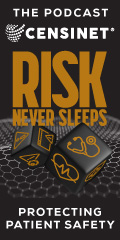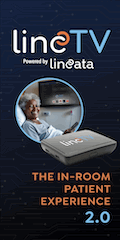I'd love to read a joint interview of Judy Faulker and Neil Pappalardo where they talk about those three days…
Curbside Consult with Dr. Jayne 4/29/24
Following my recent piece on bro culture, a number of people reached out to me to share their opinions about culture changes in healthcare and healthcare IT over the years. One of them, who I’ll call Nurse Elaine, had some commentary that was absolutely spot on. We ended up having a lengthy back-and-forth correspondence, which is always fun when you’re an anonymous blogger and still can’t believe at times that people are willing to pour their hearts out to you.
“For most millennials (or later) growing up, healthcare wasn’t typically viewed as a field ripe for entrepreneurial breakthroughs, where one could establish a privately owned billion-dollar unicorn enterprise. Becoming a clinician was a stable career path, often seen as a gateway to a comfortable life with dinner-table respect. Professionals in the 1990s, especially those deeply entrenched in healthcare, didn’t speak of any foreseen disruption looming over the healthcare landscape. The sixth graders of 1994 (today’s professionals) marveled at their first encounters with computers, explored the groundbreaking wonders of Microsoft Paint, and navigated the Oregon Trail. Innovation seemed far removed from the realm of healthcare. However, technological promises have increasingly become intertwined with care delivery with each passing era. For better or worse, it’s interesting when you consider how we got here, to a healthcare landscape filled with unicorn promises, some fulfilled but most not.”
Elaine had some amazing commentary about how enthusiasm for healthcare grew out of the dot-com bubble and talked about companies such as Theranos, Outcome Health, Amwell, and Teladoc that “emerged as darlings of the venture capital world, armed with ambitious plans to clear their consciences and revolutionize healthcare delivery with visions aimed to simplify care processes, address complexities, alleviate fears, and enhance accessibility.” Her next comment had me doing a combination cry/laugh: “Sound familiar? Twenty years in, and we’re still marketing to the same problems.” She went on to describe some of the players as “a wave of powerful novices … who eagerly entered this domain despite their lack of profound understanding of clinical care delivery, wearing glasses tinted with the allure of returns.”
She noted that while sexy startups were expanding their funding sources and building infrastructure, the founder generation of EHR companies was “patiently laying the groundwork for documentation process disruption,” which as a nurse, she sees as some of the only true disruption the industry has seen. Companies like Epic and Cerner were ready to reap the rewards of economic stimuli such as the American Recovery and Reinvestment Act and HITECH, which led to Meaningful Use and a record $35 billion flowing to incentivize EHR adoption. (Spoiler alert: it worked.) We had some great conversation around the rise of the chief information officer role within care delivery organizations and the fact that the role continues to be held largely by men over the age of 50. Sure, we’ve seen some amazing newcomers and some bold women, but for most health systems the balance of power hasn’t shifted tremendously.
I always love conversing with readers who have spent time in the trenches, especially those who have served in an informatics capacity, and Elaine definitely had the “been there, done that” vibe, recapping some of the negatives that had come out of the HITECH Act and Meaningful Use that we’re still facing today: “poorly designed user interfaces, coding issues, burdensome documentation, disconnected quality reporting, inaccessible vendor roadmaps, data sharing without meaningful context” and more. Although vendor quality issues have improved at some companies, others in the same sector remain plagued by it, and other than a handful of companies who have gotten it right, vendor roadmaps are often no better than a pirate-inspired treasure map that may or may not lead to what you seek.
From there we fast-forwarded to 2014 with the rise of Theranos and all that brought to the industry. Elaine reminded me that Elizabeth Holmes was the world’s youngest self-made billionaire, but we know now that it was all sizzle and no steak. That segued into a conversation about the 2016 US presidential election and the impact it had on healthcare, as well as women in leadership. She made some great points about the role of women in decision-making roles at venture capital firms (17%) and the fact that so-called femtech funds established by women “tend to be small due to the perceptions of women as investors – smaller ventures can only offer smaller check sizes that typically do not secure a board seat or significant decision-making power within portfolio companies, which lessens the impact on care delivery and investment strategy.”
She brought up some great points about there being “abundant evidence indicating that women primarily make healthcare decisions within their households and that nurses, predominantly female, form the backbone of clinical care delivery, but corporate boards are often dominated by men.” She went on to say that “this gender disparity fosters decision-making based on a camaraderie mentality rather than merit” as well as failing to consider what’s best for care delivery. I pointed out that some of the decisions I’ve seen also leave out the people for whom this entire industry is designed to exist – the patients, and that unfortunately some people in the industry still act like patients are somehow pesky or some kind of a nuisance. She closed on that train of thought by noting that “while healthcare may not be intentionally anti-woman, it is unmistakably pro-bro.”
By this time, I had learned that Elaine has been in the startup space for much longer than I have, and I wish I had someone like her to bounce ideas off of when I first began working with startups. She captured the most recent decade of investment in healthcare technology as “a frenzied gold rush” with a focus on disruption for its own sake rather than as a method to improve care delivery. She pointed out that investor funding has surged since 2016, growing from $4 billion that year to more than $29 billion in 2021. She had me spitting Diet Coke on my keyboard when I read her comments about “flashy conferences headlined not by expert clinicians but by D-list celebrities” and the “sea of investors swarming in puffer vests,” and looking back at some pictures and conference write-ups from the time period, she’s not incorrect in her assessment.
We talked about Theranos, and she gave me a summary of the billion-dollar fraud at Outcome Health, which somehow I had put out of my memory (the Department of Justice write-up on the incident reads like a bad soap opera plot if you’re interested). The short version involves things many in the industry have seen, misleading investors by inflating performance metrics and exaggerating market penetration. Oh yeah, there was also the part about overbilling customers.
By this point, Elaine and I had been emailing back and forth a couple of times a day, and we had finally reached 2020 and the arrival of the COVID-19 pandemic. This is where I really enjoyed hearing her impressions as a nurse, because it’s always good to commiserate with someone who knows what it feels like when your job decides that you’re expendable and not worth the $5 a day in personal protective equipment that might literally save your life. She talked about some companies that she was exposed to in her work that “emphasized flashy growth rather than gaining a profound understanding of clinical care delivery” and what it felt like to see outsiders showing up at her institution via Zoom call to offer solutions where “the well-established best practices and protocols in healthcare, developed over hears of research and learned from the challenging experiences of malpractice suits and undesirable patient outcomes clashed with the breakneck speed of ventures trying to meet their inflated valuations.”
Clinical leaders had to figure out how to cope with what she describes as “aggressive marketing tactics” and “massive ROI promises” and solutions that had the risk of worsening the pressure on clinicians. Some of these vendors in turn delivered lackluster solutions and shared some information about vendor employees she had gotten to know through her role that reported toxic work environments where teams were tasked with keeping customers quiet about defects so that the company could achieve a unicorn valuation – resembling “the cutthroat world of investment banking more than a mission-driven service sector focused on building sustainable, effective businesses.” She went on to say that “somewhere in this whirlwind, the essence of care delivery to patients and the dedication of clinicians who invested their education, finances, and daily lives into their work became lost amid the pursuit of profit.”
From there, we segued into the bursting bubble that was health tech in 2022 and 2023, with the inability of companies to raise funds among “rising inflation rates, unfulfilled growth, and frivolous spending” and the collapse of Silicon Valley Bank following a classing bank run by frightened companies. Of course, US taxpayers funded yet another bailout. She had me laughing with her advice to the industry: “Going forward, lessons must be well understood to collect $200 and move past go.” She pointed out the need for solution consolidation, the abundance of competitors, and market saturation in certain healthcare technology areas. She had some great stories about vendors who failed to understand the difficulty of selling into large health systems, including lengthy sales cycles and the need to be able to trust your vendors when you’re focused on clinical care and human health. Many healthcare leaders find the traditional tech mantra of “move fast and break things” to be not only ineffective, but at times frightening, and plenty of vendors fail to understand that.
We both shared excitement for the increase in the number of clinician innovators moving into the space. Some of these are coming from innovation groups at established care delivery organizations. In contrast to the disruptor generation, these individuals have personal knowledge of healthcare delivery and operations and understand the highly regulated industry that they’re working in. However, they’re going to have to work hard to compete with the flash and sizzle that’s out there. In my career, some of my biggest wins have been with solutions that aren’t sexy, but they get the job done and don’t increase burden to patients or their care teams. Elaine hopes that venture capital firms, which will continue to be an essential part of the industry, start taking a more sophisticated approach to innovation with attention to experts in the field and clinicians who understand the industry and its end users, including patients.
Ultimately all of us need healthcare and its associated technology to not only work, but to work well. Most of us will end up in a hospital at least once in our lifetime, whether it’s in childbirth, following an accident, for surgery, or for management of a serious illness. When we get there, we’re not going to care about the sizzle. We’re going to want the care delivery equivalent of a four-course meal and we’re going to want it done safely, respectfully, and ethically.
What do you think about the state of healthcare information technology, how we got here, and where we need to go? Leave a comment or email me.

Email Dr. Jayne.





















































































Great piece! And it isn’t just health care IT that is causing painful disruption without matching improvements in quality and quantity. It is the effect of too many inapprorpiate incentives–read $– in the so-called market of US health care. Compare to the rise of specialties based upon billable preocedures dependent on high tech at the expense of primary care or the pervasive pressure to prescribe increasingly expensive pharmaceutical products in lieu of proven and effective initial interventions at a primary or secondary prevention and treatment level in chronic illness. In this case, money is the root of all evil.
Beginning my comments by conessing that I too have been part of the problem, but it seems that much of the innovation and investment is more about building wealth for the invostor than truly improving quality, access and provider workflow while minimizing cost. The US still spends more than the rest of the industrial world while trailing in outcomes, yet we just keep spending on the latest shiny object. Following Crossing the Chasm the innovators claimed the number of lives to be saved by their solution, to the point that if you added them all up we would save every life lost since the Civil War.
At some point the US will get serious about healthcare costs and will demand results of the technology coming to us. I hope it is soon.
The thing is, much of the reorganizing of healthcare in recent decades? It can be used for either (or both) of improving patient care, but also squeezing the system for money.
While increasing the transparency of healthcare delivery, there are logical points of control now that either didn’t exist before, or were weak and ineffective.